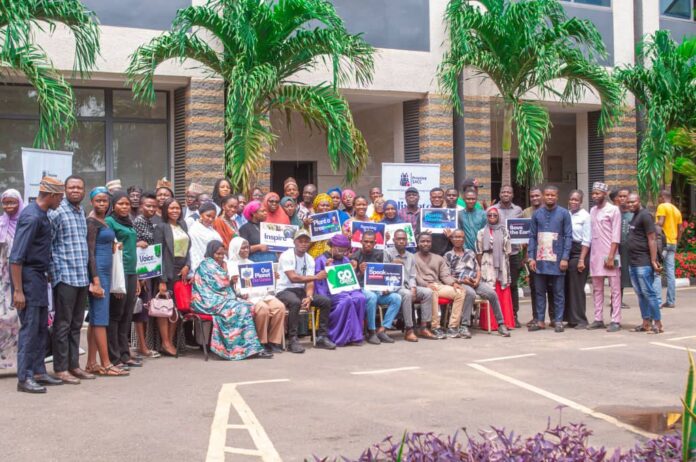By Olufemi Oni, Ilorin
Journalists, bloggers, content creators and social media influencers across Nigeria have been enjoined to embrace the use of arts in reporting climate issues in order to improve public understanding and knowledge about the topical issue.
The Executive Director of Pristine SACC Education and Technology Initiative, a nonprofit organisation,
Mrs. Umar Aisha, made the call at the opening of a one-day workshop, tagged “Climate Change Reporting through Arts and Journalism”, for journalists, photographers, bloggers and content creators in Kwara State, lamenting that despite the obvious impacts of climate crises across the world, many people still lack basic knowledge of the troubling issue.
According to the Executive Director, the workshop was intended to explore ways through which Arts and Journalism could be employed to promote the communication and understanding of climate change issues among the populace.
She said: “Our organisation has observed that despite the obvious impacts of climate crises, many people still lack basic knowledge of climate change issues, thereby hindering them from taking actions to address climate change.
“It is for this reason we have decided to host this workshop to enlighten journalists, photographers, content creators and social media influencers to combine the use of arts in reporting climate issues as the evocative power of art makes the message more accessible and emotionally resonant.”
Speaking on the theme of the workshop, ‘Bridging Arts and Journalism: A New Approach to Climate Reporting’, a Communication and Development professional, Almustaqim Balogun, said by blending the evocative power of art with journalism, climate reporting can reach broader audiences and inspire actions to combat climate change.
He disclosed that several studies have revealed that lack of basic knowledge about climate change is one of the most significant perceived barriers to taking actions.
According to him, in Africa, climate change communication faces several challenges, including limited access to reliable information, literacy gaps, language and cultural barriers, and competing socio-economic priorities.
Balogun said arts and storytelling could be used to close the gap between scientific knowledge and public understanding of climate change issues by crafting climate narratives that resonate on a personal and communal level, fostering the agency needed to take climate action.
He said: “Storytelling humanises issues and can be a powerful tool for communicating climate change to non-expert audiences. Additionally, art forms such as photography, music and filmmaking have long been a powerful tools for raising awareness about social justice issues and inspiring action. It can evoke strong emotional responses and transform complex, abstract issues into more relatable and compelling forms.
“By enabling people and communities to comprehend the issue, increase awareness, promote discussion, and affect behavioural change, effective communication through the combination of art and journalism can aid in closing the knowledge gap between science and action on climate change.”
Also speaking on the need to incorporate storytelling into climate reporting, a climate change literacy advocate, Abeedah Alabi, pointed out storytelling’s ability to connect with people emotionally, translate complex climate issues into relatable experiences and amplify marginalised voices affected by climate change.
She equally highlighted how artistic approaches such as visual art, illustrations, poetry and spoken word, digital art and animation and film documentaries could be used to enhance the communication and public understanding of climate issues.
Alabi also spoke on the role of young people in driving climate solutions, saying that “as inheritors of the planet, young people should be more invested in long-term sustainability, ensuring the health of the environment for future generations.
“We must work to bring fresh perspectives and creative solutions to address complex climate challenges.”

